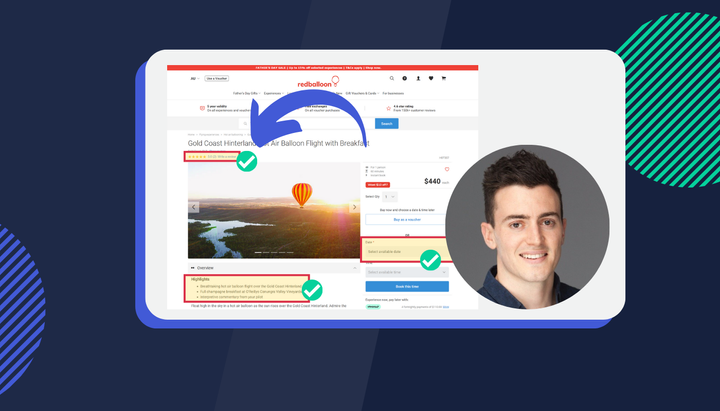4 website optimisation strategies for financial service brands
Being in the business of money management, it’s no surprise that websites in the financial services industry are designed to drive customers and potential customers through the funnel and turn them into paying clients.

Being in the business of money management, it’s no surprise that websites in the financial services industry are designed to drive customers and potential customers through the funnel and turn them into paying clients.
The problem is, with so much money, time, and effort being poured into these huge websites, things can slip through the cracks very easily and get missed.
While attaining customers will always be a priority, here are four areas your website should also be focusing on.
1. Customer experience:
On average only 22% of businesses are happy with their conversion rates. This lack of success isn’t an inefficiency — it’s an indication that money is being spent in the wrong places.
While visitors are great, if you aren’t putting just as much effort into ensuring the processes on your site are seamless, then you will have trouble converting visitors and leads into paying customers.
By turning the focus to optimising the customer experience on the site, you will be able to better engage with your customers and see real tangible value by doing so.
2. Enable customers to ‘self-serve’:
With a global pandemic currently underway, overseas support is practically non-existent.
Helping your customers to self-serve better will see you through this current climate, and also act as a catalyst so your organisation can change how they serve their customers, saving you money.
You need to be able to understand how your users are reading and digesting your content:
- What forms are they submitting or downloading?
- What fields are confusing or acting as pain points?
- Are users scrolling and reading important self-service content?
- Where do they dwell the longest, and are these struggle points?
- Are they facing any errors with viewing or managing their account?
As a channel, digital is cheap when compared to other alternatives e.g. Massive call centres. If your organisation really does have a hunger to improve their self-service model, it has to be enabled by the right technology.
The only way to effectively carry out an in-depth analysis of these issues is by accurately seeing how customers are scrolling, where dwell times are high, and how they interact with all of the content that is shown to them.
Tracking all of this can also take a lot of effort and time, so platforms that track everything out of the box will save your team a lot of time. It also means you can get back to making fast, impactful decisions with all the data you need at your fingertips.
3. Optimise your complex forms for success
Forms will be your most insightful drop-off points across your website, and will typically provide the most value if you fix what is causing them. In fact, the average form conversion across all industries is 11%.
With our own customers we’ve seen that using a one-time PIN to verify a phone causes roughly 4% form abandonment. We’ve also seen that form abandonment rates at the start of forms are high, and abandonment fluctuates between 5-15% depending on how well informed users are.
When forms are complex, many potential customers drop off in the process of filling them out. You can give yourself an advantage by learning exactly where they leave and why.
Some of the questions you might want to ask:
- Are you asking for too much personal information or documents, too soon?
- Are you overloading them with information or giving too little before they get to that decision point?
- Are there validation steps that block users from progressing (like a one-time pin)?
- Are there important micro-behaviours from users that result in abandonment?
We can provide you with absolute clarity over these questions, to enable a higher conversion rate and a higher ROI.
4. Internal Communications
Your website won’t run efficiently if communication between teams isn’t set up for success. And we are not saying that you need to change your internal comms operating model, but why not give yourself an advantage.
One of the main reasons errors on your site can take so long to fix is because of the chain of command to fix these issues. For example, we’ve seen businesses use a combination of heatmapping tools with their analytics platforms to identify problems.
When customers complain about issues, it typically takes businesses between 3-6 hours to resolve each individual issue, which they can only find and recreate 30% of the time.
Instead, you can find errors in real-time and bookmark where the error has happened with the exact code by simply typing in the message that occurred. With the seamless sharing functionality of our tool, find errors in minutes,
In summary, while getting leads to your site is important, it is clear that without these other steps in place, you will struggle to get the conversions. There are many tools on the market to help you with all these issues – ours has simply been designed to give you everything you need in the one place. One question, one click, one answer.



